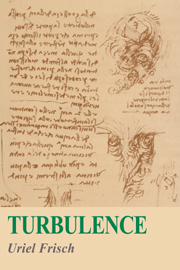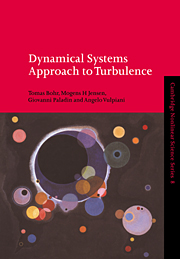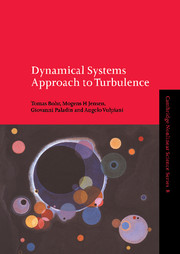Turbulence
This textbook presents a modern account of turbulence, one of the greatest challenges in physics. The state-of-the-art is put into historical perspective five centuries after the first studies of Leonardo and half a century after the first attempt by A. N. Kolmogorov to predict the properties of flow at very high Reynolds numbers. Such 'fully developed turbulence' is ubiquitous in both cosmical and natural environments, in engineering applications and in everyday life. The intended readership for the book ranges from first-year graduate students in mathematics, physics, astrophysics, geosciences and engineering, to professional scientists and engineers. Elementary presentations of dynamical systems ideas, of probabilistic methods (including the theory of large deviations) and of fractal geometry make this a self-contained textbook.
- Author very well known in the field of turbulence
- Subject widely taught to physicists, applied mathematicians, astrophysicists, and earth scientists
- Uses modern ideas from chaos and symmetry breaking
Reviews & endorsements
'It is certainly an excellent book for those wanting to take a fresh look at some aspects of the subject. Teachers of turbulence will find it useful, for at least part of the material of their course. The book is undoubtedly worth reading by everybody concerned with some aspect of turbulence research.' A. Tsinober, Journal of Fluid Mechanics
'The title reveals a great advantage of this book: It is not a book on fluid dynamics with a chapter or so on turbulence; it is instead a modern, physics-oriented discussion of a difficult subject about which surprisingly little can be said to be known with confidence. … This is a work of great scholarship. … This book belongs in the library of any college or university where physics is taught. It can productively be used as a reference in advanced undergraduate courses or as a text for a one-semester course on turbulence itself.' Russell Donnelly, Physics Today
'… recommended to everyone who wants to know more of the basis and present-day understanding of turbulence.' Nonlinear Science Today
Product details
November 1995Paperback
9780521457132
312 pages
228 × 151 × 14 mm
0.528kg
72 b/w illus.
Available
Table of Contents
- Preface
- 1. Introduction
- 2. Symmetries and conservation laws
- 3. Why a probabilistic description of turbulence?
- 4. Probabilistic tools: a survey
- 5. Two experimental laws of fully developed turbulence
- 6. The Kolmogorov 1941 theory
- 7. Kolmogorov and Landau: the lack of universality
- 8. Phenomenology of turbulence in the sense of Kolmogorov 1941
- 9. Intermittency
- 10. Further reading: a guided tour
- References
- Author index
- Subject index.






